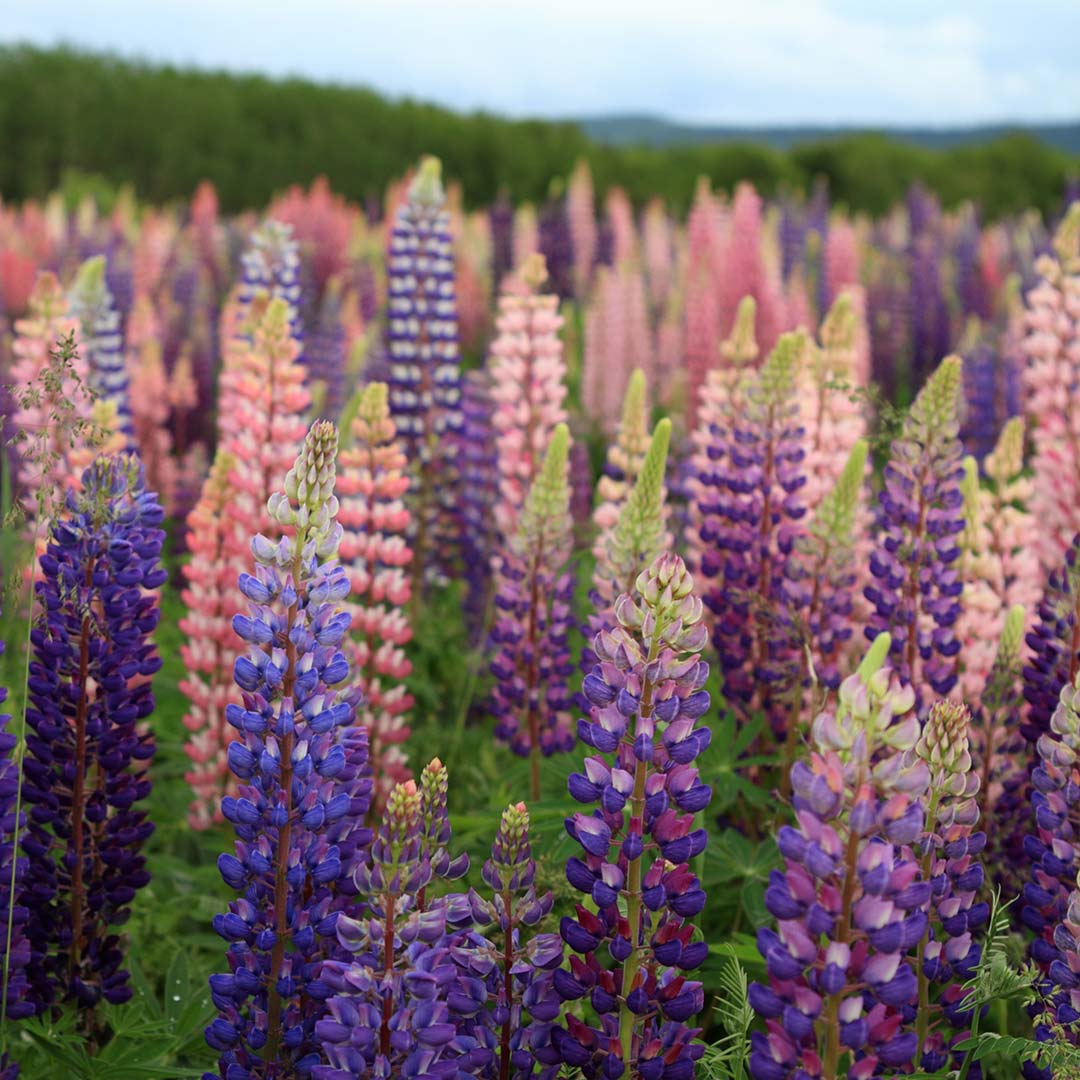Atlantic Canada’s Wildflowers and Other Plants
Along the forest margins of Atlantic Canada, raspberry and blackberry thickets proliferate, providing, among other benefits, welcome snacks for summertime hikers. Throughout the spring and summer months, the Maritimes host magnificent wildflower shows that change subtly week by week. Common wildflowers throughout New Brunswick and Nova Scotia—seen especially along roadsides in summertime—include lupine, Queen Anne’s lace, yarrow, pearly everlasting, and daisies. The showy spikes of purple loosestrife, a pretty but aggressive and unwelcome pest, can be seen everywhere.

Bayberries and wild rose bloom on the Chignecto Isthmus during June. The bayberry bush grows clusters of dimpled fruits close along woody stems and releases a pleasant spicy aroma, popular in potpourri and Christmas candles. The yellow beach heather colors the Northumberland Strait dunes and sandy plains, and the rhodora (miniature rhododendron) brightens coastal marshes. Another dune resident, the beach plum, grows snowy white to pinkish flowers in June, which produce fruit welcomed by birds, beasts, and man in late summer and early fall. Nutrient-rich bogs in northeastern New Brunswick nurture plant exotics, especially at Lamèque and Miscou Islands, where wild cranberry and sundew grow among peat moss beds. Prince Edward Island is like one large garden when late spring and summer’s warm temperatures urge columbines, bachelor’s buttons, pansies, lilacs, wild roses, pink clover, and the delicate lady’s slipper (the provincial flower) into blossom.
Newsletter Signup
By clicking ‘Sign Up,’ I acknowledge that I have read and agree to Hachette Book Group’s Privacy Policy and Terms of Use

Across Newfoundland’s marshes and bogs, you’ll see white and yellow water lilies, rare orchid species, purple iris and goodwithy, and insectivorous plants (such as the pitcher plant, the provincial flower). Daisies, blue hare-bells, yellow goldenrod, pink wild roses, and deep pink fireweed thrive in the woodlands. Marsh marigolds, as bright yellow as daffodils, are native to the western coast’s Port au Port Peninsula. Low, dense mats of crowberry are common throughout Newfoundland and Labrador. The late-autumn crop of blue-black fruits is a favorite food of curlews, plovers, and other migrants preparing for their long flights to the Caribbean and South America. Yellow poppies, heather buttercups, miniature purple rhododendrons, violets, and deep blue gentian, mixed among the white cotton grass, brighten Labrador’s arctic tundra; farther south, the daisy-like arnica and purple saxifrage grow in plateau-rock niches.
You may encounter poison ivy. Mushrooms are everywhere; be absolutely certain you know the species before sampling—the chanterelles are culinary prizes, but the amanitas deadly poison.
Start planning your adventure
Pin it for later








